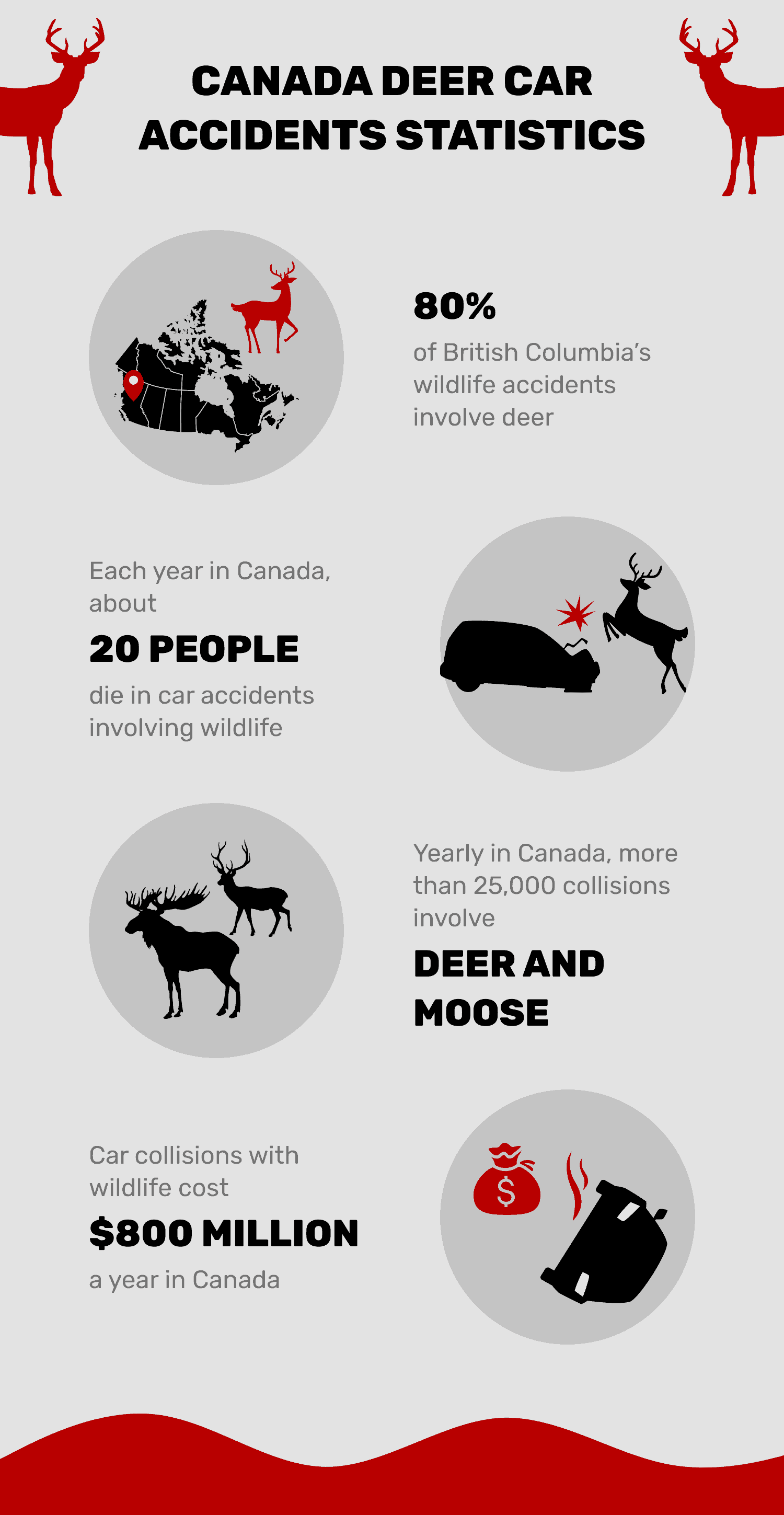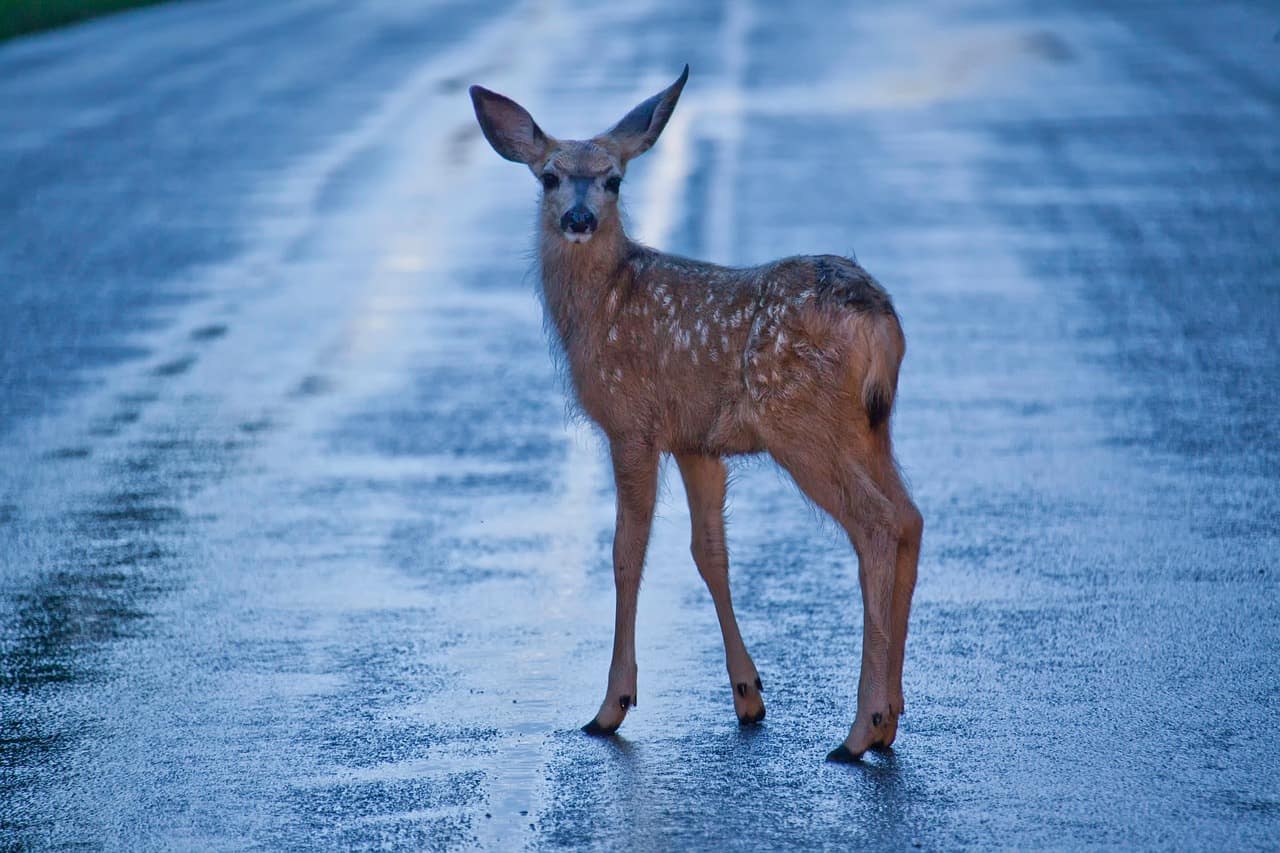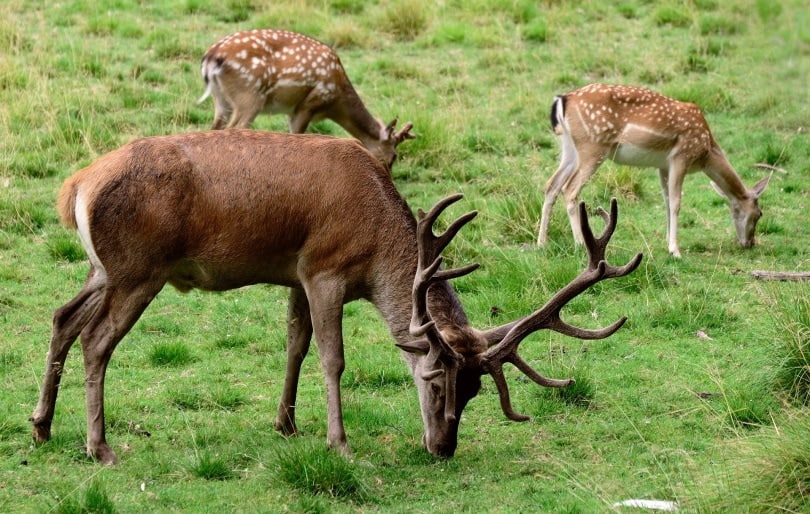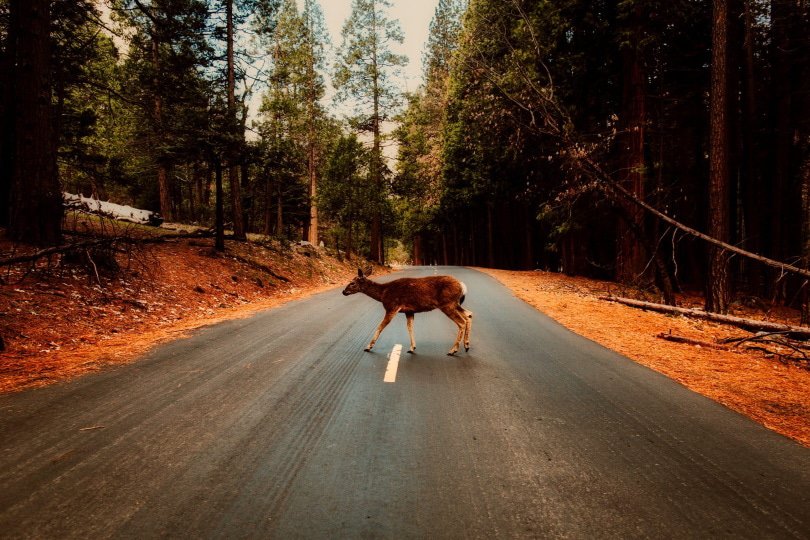Note: This article’s statistics come from third-party sources and do not represent the opinions of this website.
With more cars on the road than ever before, and people covering greater distances behind the wheel than they ever have, it is hardly surprising that wildlife collisions are becoming increasingly common. Some may result in a shaken driver and no injury to the animal concerned, but others can prove fatal for the wildlife, the driver, and potentially even to other road users.
Although there aren’t many statistics specifically related to deer accidents, there are some, and there are many more statistics on general wildlife car accidents. Read on for 11 relevant deer car accident statistics.
Click to Skip Ahead:

The 11 Deer Car Accident Statistics
- More than 25,000 collisions involving ungulates occur every year across Canada
- Ontario is the province with the most wildlife collisions
- More than 200,000 animals may have died in ten years in British Columbia
- Approximately 9,000 wildlife collisions are reported in BC every year
- 80% of BC’s wildlife accidents involve deer
- The average wildlife collision results in a claim of $2,800 per crash
- Approximately 7% of wildlife crashes involve fatalities to humans
- Approximately 20 people die, each year, in accidents with wildlife
- One in 17 motor vehicle collisions involve a wild animal
- Wildlife car collisions cost $800 million a year in Canada
- Most accidents occur between October and January


Deer Car Accidents In Canada
1. More than 25,000 collisions involving ungulates occur every year across Canada
(Traffic Injury Research Foundation)
With more than 35 million cars in Canada and vast open spaces with large numbers of wildlife, it is perhaps not that surprising to learn that more than 25,000 car accidents involving ungulates occur every year across the country. An ungulate is a hoofed mammal and the most common in Canada are deer and moose.

2. Ontario is the province with the most wildlife collisions
(Transport Canada)
Of Canada’s provinces and territories, Ontario has the greatest number of deer and wildlife collisions. Although most of these pass without fatal injury to people, approximately 600 injuries are reported every 12 months in the province. The province with the second highest number of wildlife collisions is Quebec with just over 400. In contrast, the Northwest Territories only experience two or three such accidents a year.

British Columbia Accident Statistics
3. More than 200,000 animals may have died in ten years in British Columbia
(Wildlife Collision Prevention Program)
Figures show that approximately 100,000 animals were reported as being fatally involved in car accidents in a ten-year period, but this number is believed to be much lower than the actual figure, which is estimated to be four times higher. This means that more than 200,000 animals are likely to have died over the period.
4. Approximately 9,000 wildlife collisions are reported in BC every year
(Wildlife Collision Prevention Program)
The same report shows that 9,000 collisions are reported, on average, each year in BC. This only represents a small portion of the accidents that have actually occurred. Reasons for people failing to report an accident include a lack of damage to the vehicle or injury to the person.

5. 80% of BC’s wildlife accidents involve deer
(Wildlife Collision Prevention Program)
Deer are prevalent in many provinces of Canada, but it is still surprising to learn that more than a quarter of the wildlife collisions reported in British Columbia involve deer. This, combined with the other figures, means that a large animal-vehicle collision occurs roughly once every six hours across the country.

The Cost of Collisions
6. The average wildlife collision results in a claim of $2,800 per crash
(Traffic Injury Research Foundation)
Crashes aren’t just devastating to wildlife and potentially fatal to drivers, they are also very costly. The average claim for wildlife crashes is $2,800 per crash and these accidents do nearly $40 million of damage in Ontario alone. In Manitoba, the cost of these collisions equates to $31 million, which is only slightly less than the $33 million cost of accidents caused by impaired driving, and more than the $23 million cost of drivers not wearing seatbelts.
7. Approximately 7% of wildlife crashes involve fatalities and injuries to humans
(Traffic Injury Research Foundation)
Accidents with deer can be devastating. The large animal causes serious damage to cars and this, in turn, can lead to major injuries and even fatalities to drivers and passengers. Approximately 7% of all wildlife accidents led to injury or death of the driver or passenger involved in the accident.
8. Approximately 20 people die, each year, in accidents with wildlife
(Transport Canada)
The frequency of wildlife accidents and the number of those accidents that result in injury or death means that 20 people die, across the country, every year following an accident with deer and other animals.
9. One in 17 motor vehicle collisions involve a wild animal
(Desjardins Insurance)
Common causes of motor accidents involve distracted driving, driving while impaired, and driving while using a mobile device. However, one in 17 crashes involve a wild animal, showing that drivers need to pay attention to their surroundings at all times. According to these figures, one such accident occurs every 38 minutes.

10. Wildlife car collisions cost $800 million a year in Canada
(Desjardins Insurance)
Across the whole of Canada, the cost of wildlife car collisions is believed to be in excess of $800 million a year.
11. Most accidents occur between October and January
(Desjardins Insurance)
Accidents most often occur near breeding and foraging grounds and where there is a nearby water source. There is a greater frequency of incidents when roads are icy, too, and the most common time of year for a driver to be involved in a traffic accident with a deer is between October and January, which coincides with the mating season for deer and moose.
- Related Read: 10 Most Dangerous Animals in Canada: Statistics to Know

Frequently Asked Questions
How Do You Help A Deer That Got Hit By A Car?
If you see an injured deer, pull over in a safe place, call the police, and give as precise a location as possible. You should not approach or try to help the deer yourself but wait for the police to arrive. Trying to help could put you in danger and may spook the animal so that it causes itself more damage.

What Should You Do If You Are Involved In A Deer Car Accident?
If you are directly involved in a deer car accident or a wildlife-vehicle collision, you should ensure that you and your passengers are safe by putting your hazard warning lights on. Call an ambulance for any human casualties and call the police to inform them of the accident. The police will tell you what to do next, but this will usually mean waiting for them to arrive.
Why Do Deer Get Hit By Cars?
Deer are skittish animals that tend to bolt at the first sound, so how do they get hit by loud and bright cars? Deer may run into the road when spooked and their color and speed mean that they are difficult to spot especially when driving at night. They are also prone to running into the road when chasing or running away from a potential mate. They are more concerned with reproducing than they are with road safety.
What Color Car Hits The Most Deer?
Believe it or not, research has been done to determine what color car is most likely to hit large animals like deer. Estimates vary but you are between 10% and 47% more likely to hit a deer if you drive a black vehicle rather than any other color car.
(Citywide Law Group)

Conclusion
Deer are large animals that, if hit by a car, can cause serious damage to the vehicle. Such accidents can also potentially lead to fatalities for the deer and drivers and passengers. If you see a deer on the road, you should slow down as much as possible and do not veer to the other side of the road. Swerving across the road can lead to accidents with other cars and could cause the death of other road users. Some 20 people a year die in vehicle collisions that involve deer and other wildlife, costing nearly a billion dollars a year.
Featured Image Credit: Piqsels
